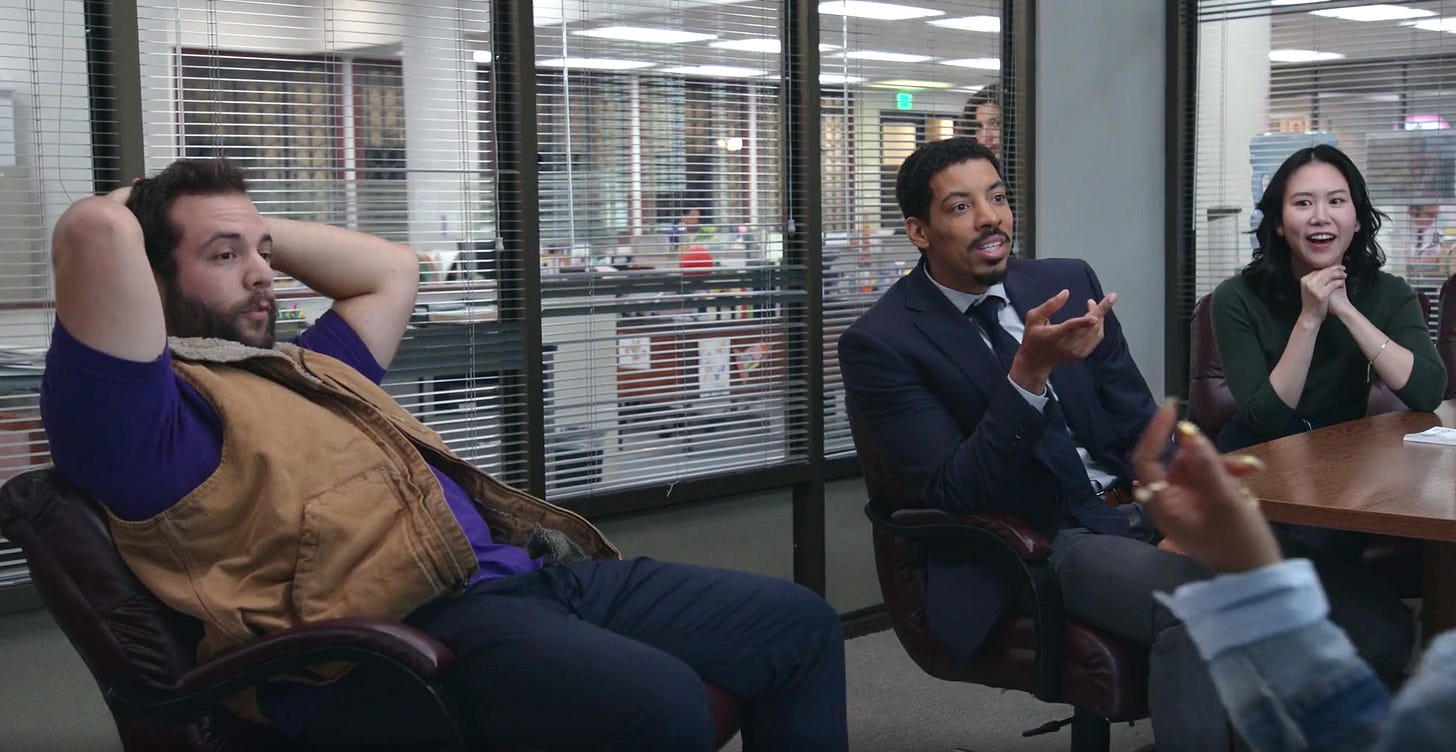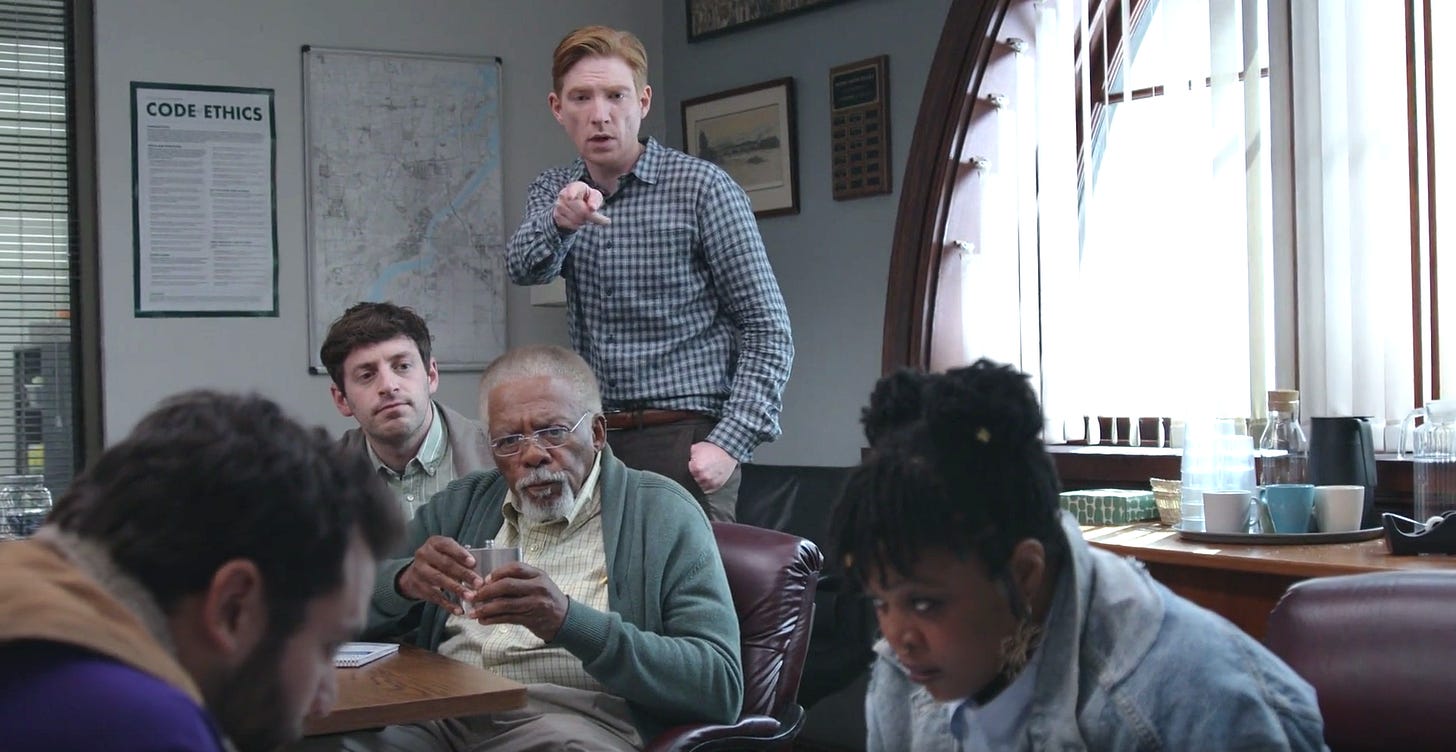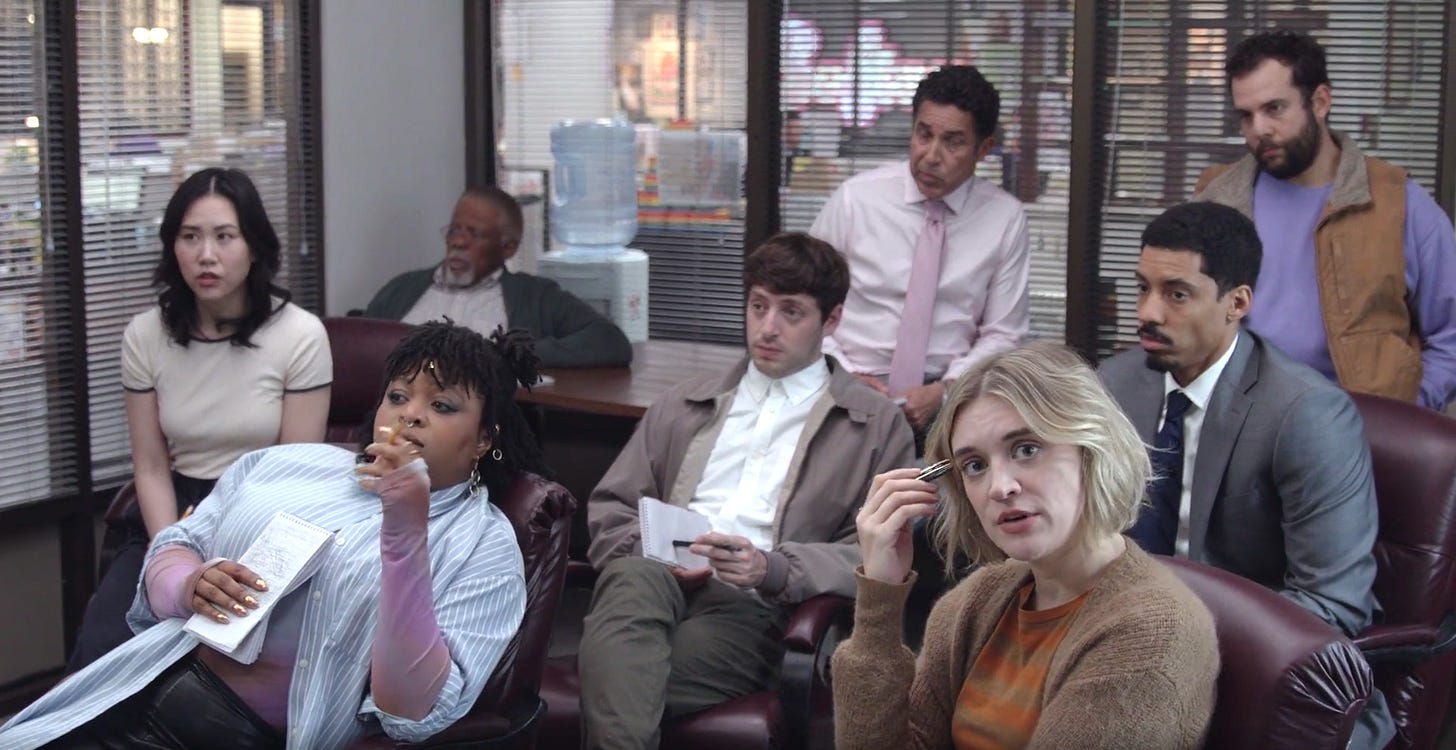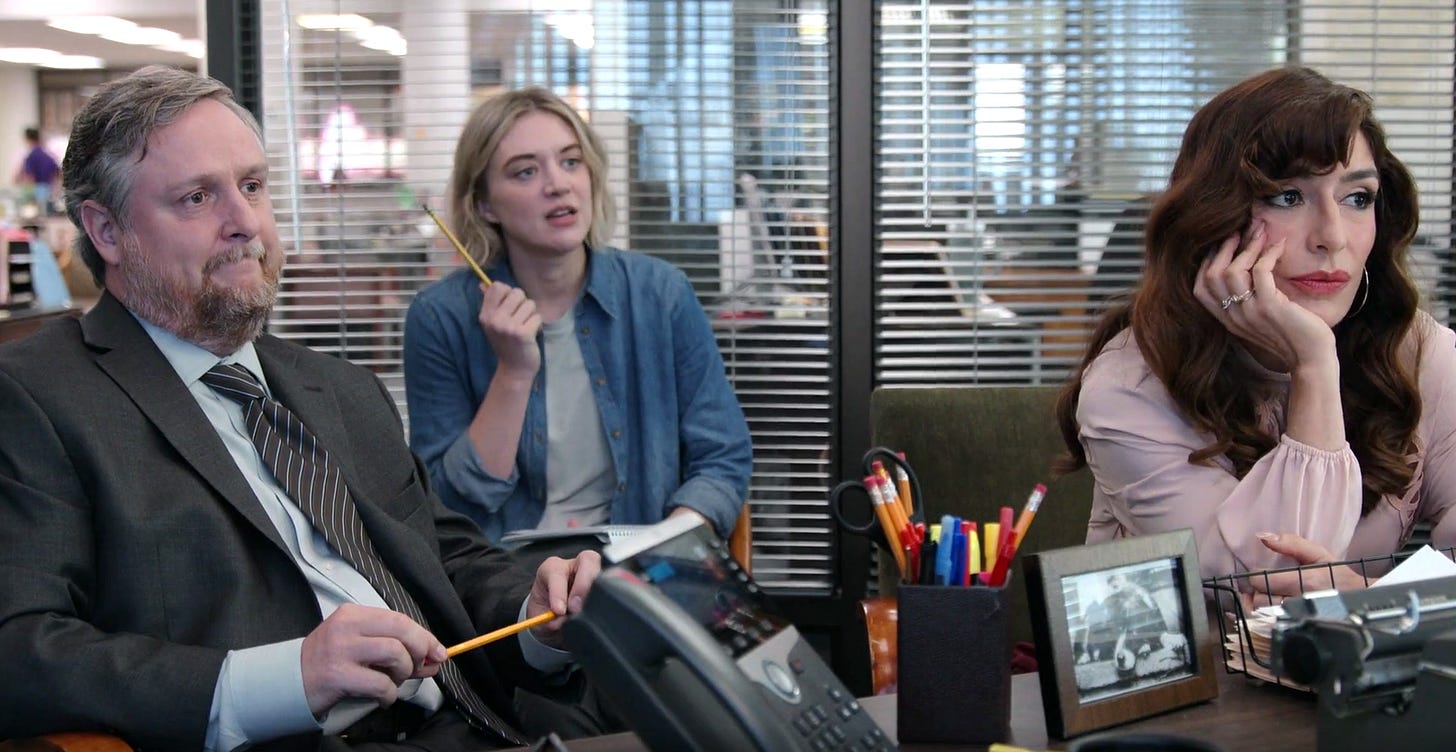The Paper is a strange and beautiful little paradox: brand new yet instantly familiar. It borrows the documentary-style glances and wince-inducing silences of The Office and Parks and Recreation, then plunks them down in a struggling Toledo newsroom. The result is a comedy that feels both like comfort food and a fresh experiment. The first episodes serve up plenty of “please make it stop” cringe, but unlike its forebears, the show gets you to care about its characters early on. Yes, they are awkward. Yes, they are infuriating. But they are also recognizably human, which makes the gags hit harder and the small wins oddly satisfying.
The casting reflects a deliberate effort to reach a global audience. Domhnall Gleeson of Ireland sighs and stumbles as Ned Sampson, a wet behind the ears editor in chief who cannot quite steer the ship. Sabrina Impacciatore from Italy plays Esmeralda Grand, a managing editor with both flair and frayed nerves. Tim Key contributes his trademark British oddball energy and Gbemisola Ikumelo brings charisma and razor-sharp timing to the mix. Then there is Oscar Núñez, sliding back into Oscar Martinez with such ease it feels like a wink across the television universe. His arc is pure pleasure, a small reward for fans who have stuck with the genre over decades. By distributing the “cringe boss” traits across several characters rather than piling them onto one Michael Scott surrogate, the show avoids photocopying and instead builds a messier, funnier, more believable newsroom.

At its heart, The Paper is about more than office antics. It taps into the slow, painful erosion of local journalism, a problem not just in Ohio but everywhere. Shrinking staffs, vanishing budgets, shuttered presses: the stakes here are grounded in a crisis audiences from Manchester to Melbourne already recognize. The series treats this decline with humor, but also with weight. Deadlines, messy crushes, and petty editorial battles are ridiculous, yet they are also rooted in a struggle that matters. And because the humor springs from recognizable human quirks rather than U.S.-specific references, the show’s punchlines translate effortlessly. Whether you are in Sydney, London, or Los Angeles, you will recognize these dynamics and laugh at them.
The newsroom itself becomes a character: chaotic, overstuffed, plastered with bulletin boards and teetering piles of copy. The handheld cameras glide through its corridors, catching moments of mortifying silence as well as surprising tenderness. It is a lived-in space, one that recalls earlier mockumentaries but feels alive and contemporary.

The show’s humor is consistently universal. It it plays to the inside jokes audiences understand the world over, mining the awkwardness of work relationships, the frustrations of professional life, and the absurdities of small communities. Everyone has faced bureaucratic missteps, unreasonable expectations, or coworkers whose behavior drives them crazy. By framing these experiences in a newsroom context, the show builds on familiar workplace comedy dynamics while keeping them fresh. It is a testament to the writing that the comedy lands without feeling stale or overly derivative.
The global accessibility of The Paper extends to its distribution. Premiering simultaneously across Peacock and Hulu in the U.S., Binge and Foxtel in Australia, and Sky and Now in the U.K. and Ireland, the show enables international audiences to share the same conversation. Unlike previous sitcoms whose staggered releases limited global engagement, this strategy creates real-time discussion and cultural exchange. Fans in multiple regions can react to the same episodes simultaneously, helping the show feel like a worldwide event rather than a regional curiosity.
The show balances nostalgia with innovation. Tim Key offers echoes of David Brent’s more exasperating traits, providing a nod to the U.K. original Office, while Oscar Martínez’s storylines reward long-time U.S. fans. Yet these callbacks never dominate. The ensemble feels distinct, storylines remain new, and the humor is consistently fresh. The Paper respects its lineage while establishing its own identity, appealing both to viewers who love workplace comedy and to newcomers encountering it for the first time.
Character dynamics are another key strength. Archetypes such as the bumbling manager, cynical, the checked-out, and idealist are recognizable globally, but their interactions are unique. The ensemble chemistry evolves over the season, allowing each character to shine without redundancy. This careful orchestration makes the awkward moments more engaging and the victories more satisfying. It also supports the show’s central theme: how individuals navigate professional struggle while forming bonds and finding meaning.
Themes of resilience, ambition, and community reverberate beyond the newsroom. The decline of local journalism is a global issue, and The Paper highlights both the challenges and rewards of keeping information accessible. While the stories are set in Toledo, they resonate internationally, showing audiences the stakes and joys of committed work. The series also injects optimism, portraying small victories and personal growth alongside professional setbacks.
The show’s writing and pacing further enhance its global appeal. Early episodes are intentionally cringe-heavy, reminding audiences of classic mockumentary discomfort, but the scripts quickly balance humor with empathy, allowing viewers to connect with characters and invest in their outcomes. The dialogue avoids overly U.S.-centric idioms, relying instead on universally comprehensible interactions and workplace dilemmas. Each storyline progresses with clarity, enabling international audiences to follow character arcs without cultural confusion.
At the end of the season, The Paper succeeds because it recognizes what is universal about human experience. It portrays characters who are exasperating, awkward, and endearing. It explores themes of professional struggle, personal growth, and community relevance. It reminds viewers of the small victories that make work meaningful and the ways people connect despite differences. Whether you are in Toledo, Sydney, or Dublin, these experiences resonate.
It is not a regional sitcom with global appeal. It is a global sitcom with global appeal. And that, in 2025, feels like something both amazing and necessary. The Paper entertains, inspires, and connects audiences around the world, proving that workplace comedy can travel far when it tells stories that matter and shows characters we can care about. Its combination of universal humor, relatable themes, strong ensemble chemistry, and strategic distribution offers a blueprint for international television success while delivering a show that is as comforting as it is groundbreaking.
Where to Watch The Paper
Audiences worldwide can join the newsroom chaos at the same time:
United States: Streaming exclusively on Peacock, with all 10 episodes of Season 1 available now.
Canada: Airs weekly on Showcase and streams on StackTV (via Prime Video Channels).
United Kingdom & Ireland: Available on Sky Max starting September 5, with the full season also streaming on NOW.
Australia: Streaming on Binge (first four episodes on September 4, then two weekly) and airing on Foxtel.
Netherlands: Coming later in Fall 2025 on SkyShowtime.




